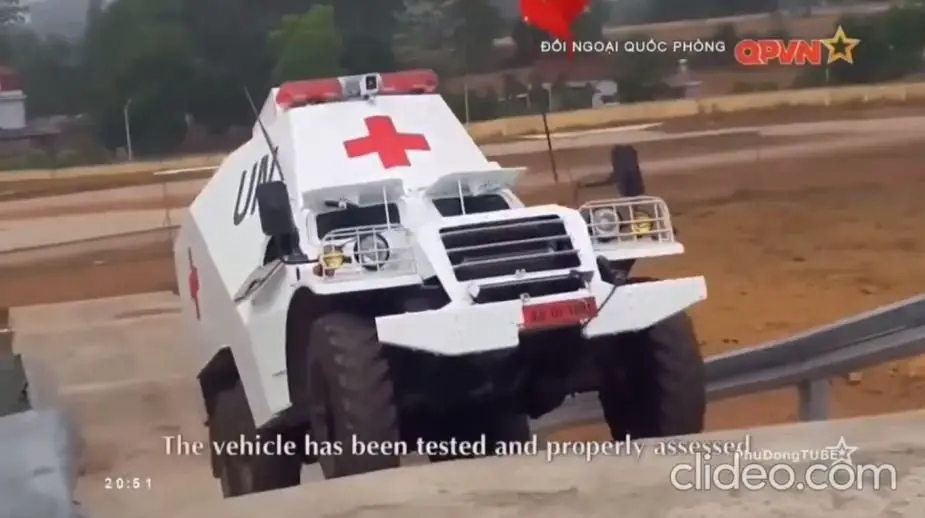Breaking news
Vietnam deployed BTR-152 for UN mission in the Sudan.
In 2018, for the first time, Vietnam decided to contribute to a UN peacekeeping force, Lee Ann Quann reports on Twitter. Composed of medical personnel, the Vietnamese contingent participated in United Nations Mission in the Sudan (UNMIS). Expecting hostility, VPA converted a BTR-152 into a medevac. The BTR-152 received an additional 15mm of armor on the front and 10mm on the sides, enough to stop small arms fire.

BTR-152 upgraded by the Vietnamese army for its deployment in the Sudan (Picture source: QPVN)
In November 1946, the BM Fitterman design bureau started development work on a 6 × 6 armored personnel carrier called the BTR-140. This was based on the chassis of the ZiS-123 truck, itself a derivative of the ZiS-151 truck but with an improved engine. The first prototypes of the BTR-140 were completed in May 1947 and tests were completed in 1949. The BTR-140 was accepted for service on 24 March 1950 under the designation BTR-152 and first production vehicles were completed in 1950. The first production models were based on the chassis of the ZIL-151 (6 × 6) 2,500 kg truck but later vehicles (from and including the BTR-152V1) were based on the chassis of the improved ZIL-157 (6 × 6) 2,500 kg truck.
By today's standards the BTR-152 (6 × 6) is obsolete as it lacks cross-country mobility and has poor protection for its occupants from small arms fire, shell splinters and mines. According to United Nations sources, there were no exports of surplus BTR-152 series APCs by any country between 1992 and 2000.
The hull of the BTR-152 is made of all-welded armored steel. The BTR-152 has no NBC system, no night vision equipment and no amphibious capability. The winch, if fitted, is mounted at the front of the vehicle and has a maximum capacity of 5,000 kg and 70 meters of cable. The winch is also equipped with a special block which can be used as a pulley block to increase pulling capacity, or as a conventional block to change the direction of pull. The winch incorporates a three-speed Power Take-Off (PTO) unit (low, high and reverse) controlled by a lever in the driver's compartment. Some models have a central tire-pressure regulation system which allows the driver to adjust the tire pressures to suit the type of ground being crossed.
There are three sockets for mounting machine guns, one on the top of the armor cover over the commander's and driver's position and the other two either side of the troop compartment. The forward mounting normally has a 7.62 mm SGMB machine gun, which can be elevated from -6 to +23.5º and has a traverse of 45º left and right, or a 12.7 mm DShKM heavy machine gun. The side mountings normally have 7.62 mm SGMB machine guns.




























